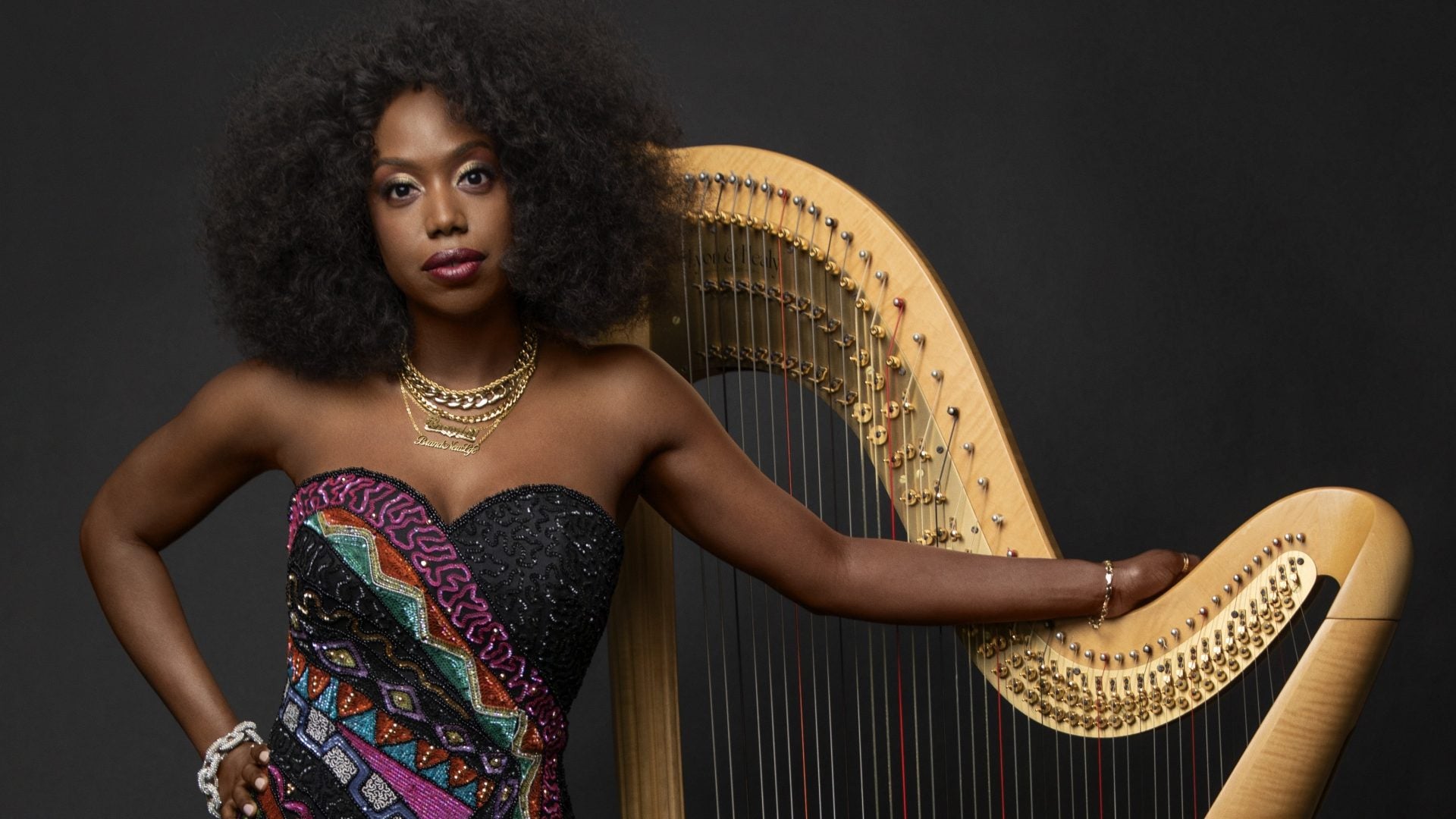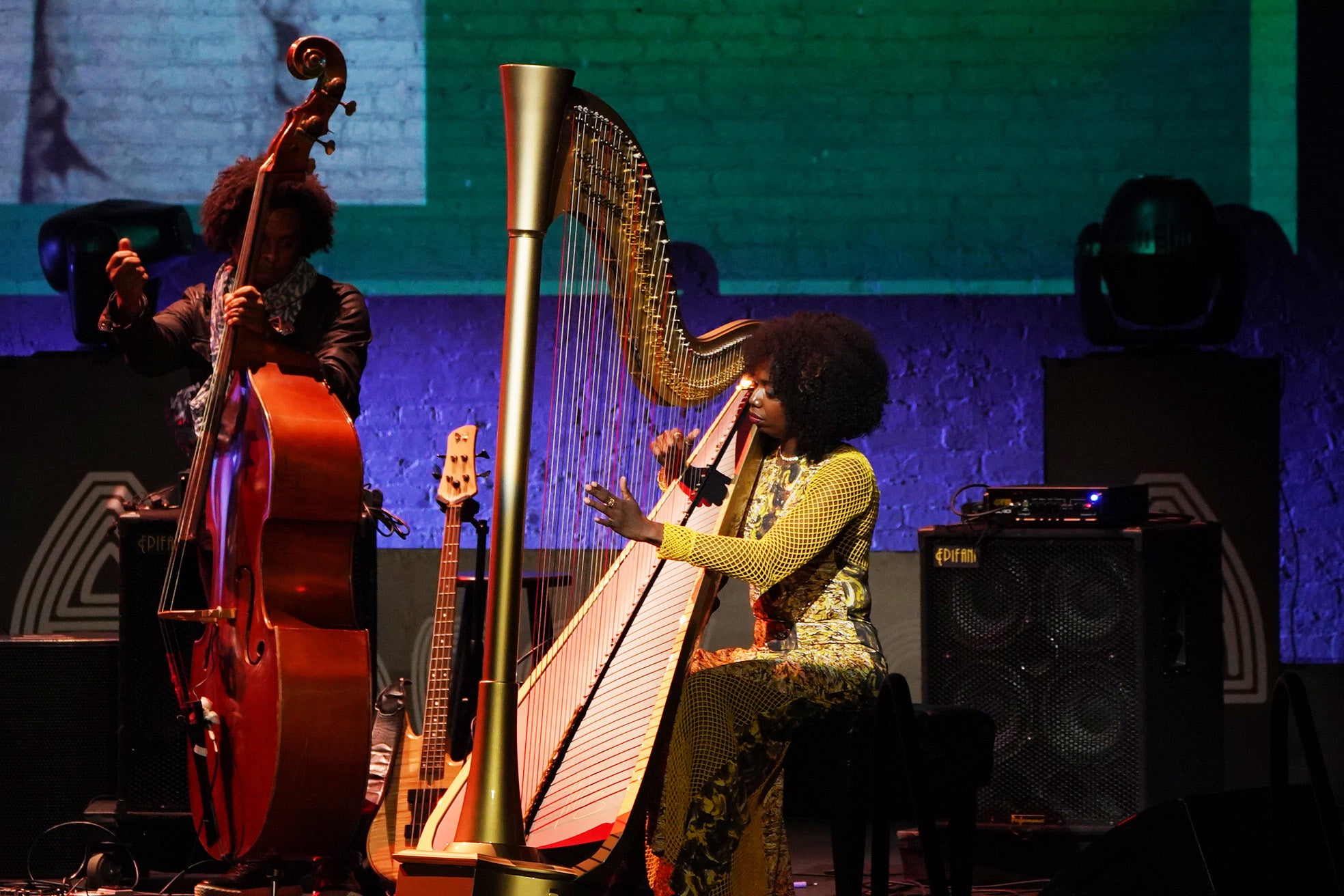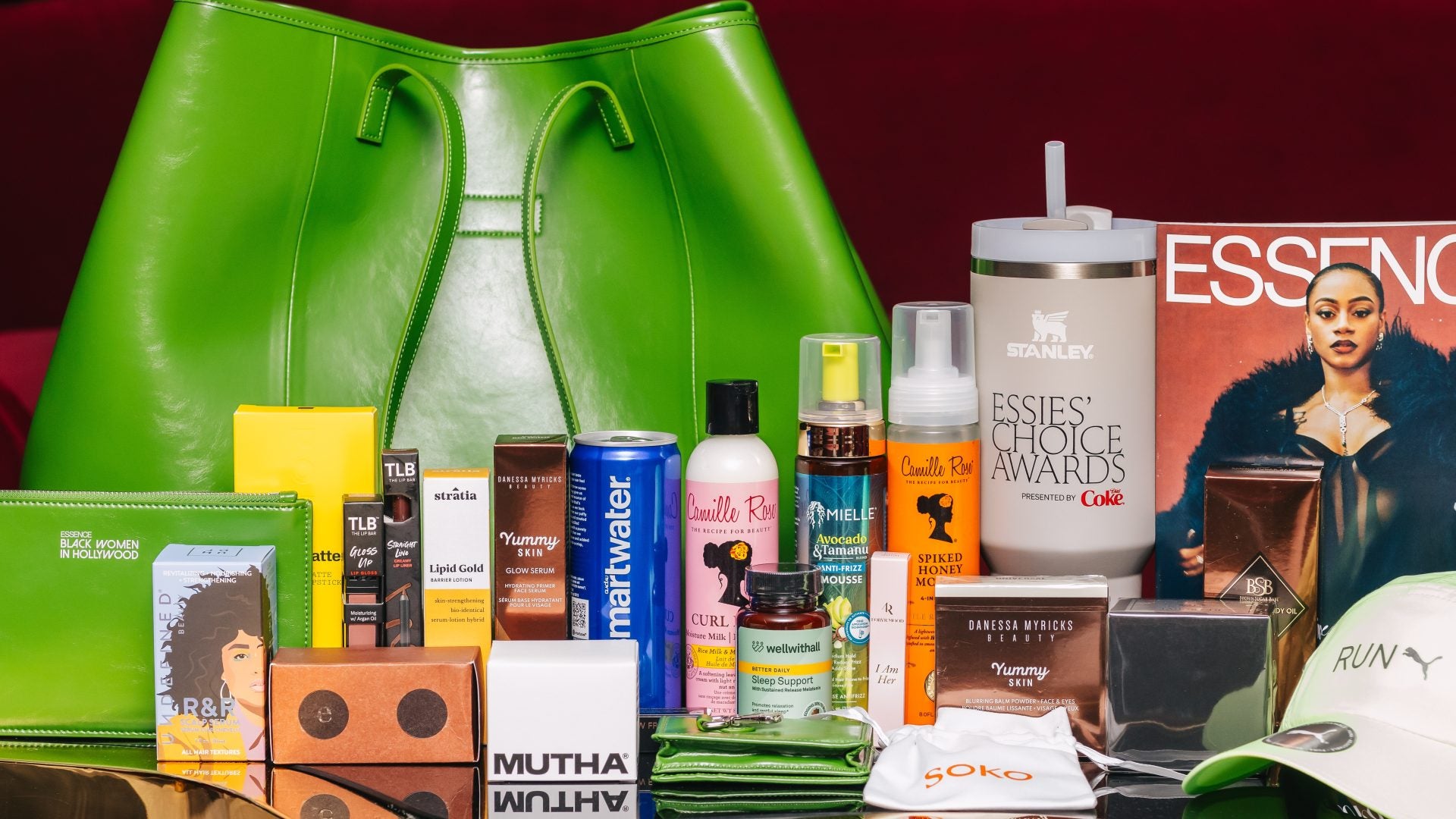
Brandee Younger says she doesn’t ever remember fitting in a nice little box. In junior high school she was the only Black girl among the harpists. In college, she was one of three Black students in the orchestra. Today, at 40, it’s still not common to see Black female harpists, but she’s kicking tradition to the curb as a badass harpist straddling the worlds of classical, jazz and hip-hop music.
She made history as the first Black female solo artist to receive a Grammy nomination for Best Instrumental Composition for Beautiful is Black from her groundbreaking 2021 debut album, Something Different. She can hold her own playing classical music with the best of them, as well as collaborate with artists like Beyoncé, John Legend, Drake, Stevie Wonder, and Lauryn Hill.
She distinguishes herself even further still with her signature style. She performs in Afrocentric, bright colors, jumpsuits, catsuits and rocks Black fashion designers like Christopher John Rogers, Ulla Johnson, Tia Adeola and Marrisa Wilson. “The band wants to wear black. I steer clear of orchestral black. Black is for funerals. Black is boring,” Younger tells ESSENCE. She describes her fashion sense as “Mary J Blige meets conservative/classic Jackie O.”

Holding onto her identity as she navigated a very white world was important, which meant playing the game. She knows how to check the boxes, like getting classical training, but she also committed to staying true to herself. “I played what was required, what was in the method book, but also what I wanted to play, what I was listening to on the radio. I would audit classes in the jazz department, not to participate, but to listen. I would take CDs of pop music with me to my music lessons and my teacher helped teach me how to play them too,” says Younger. “They made me feel comfortable, socially and culturally,” says Younger, who grew up in Hempstead on Long Island with the music of smooth jazz, and R&B focused WBLS radio stations.
Younger, is everything but ordinary – she earned her Bachelor of Music in Harp Performance and Music Management from the Hartt School of Music, followed by her Master of Music from New York University. She first played flute and was inspired by her father’s colleague who played the harp. “He took me to her house, and I jammed with her. When she told me if I played the harp, I would likely get a scholarship, that got my attention,” she recalls from her teenage years.
While she was studying music, Younger wasn’t dreaming of an orchestral career. “I had no Black role models for that. I was looking at Alice and Dorothy. They did what they wanted; they were true to themselves.”
It’s Dorothy Ashby and Alice Coltrane, (wife of jazz giant John Coltrane) she’s speaking of, who broke barriers in the 1950s and 1960s as Black female harpists who played jazz and classical music. She took a page out of the songbooks of both of them. “It wasn’t easy back then to be a Black woman harpist,” says Younger. Their work greatly influenced her. “The first time I heard Alice at the Blue Note, it was like, whatever she is doing with that harp it sounds so soulful, cool. I could relate to it. Dorothy was playing on soundtracks of movies like the Thomas Crown Affair. She made the harp relevant,” says Younger. Her latest album released this year, Brand New Life honors Ashby and includes collaborations with hip-hop and R&B greats Pete Rock, Mumu Fresh and Meshell Ndegeocello. “It’s not just a tribute record, but me playing her music through my lens. It was important to collaborate with Pete Rock who shared a love of Ashby and Meshell was a huge fan of hers too. When she said yes to the project, I nearly did a backflip.”
While she didn’t have much in the way of role models, she’s doing her part to make a difference. Today, she teaches at NYU and The New School. “It’s important for me to teach what I do and not just the traditional classical works,” says Younger, who gets a great sense of reward from seeing her students’ progress. “The harp helps build your confidence; you see things differently.”
Another positive development in a career with a trajectory that continues to rise, was a Grammy nomination. “I was of two minds. I thought it couldn’t be true. But I was also like, it’s disappointing that in 2022 this was the first nomination in this category for a Black woman. That shouldn’t be. We do more than sing and dance. We write. To be recognized for composing music among the people that were nominated, it was thrilling,” she says.
Looking ahead to 2024, one thing she is excited about is becoming the SF Jazz Resident Artist Director for the season 2024-2025. As part of this residency, she will curate shows in March 2024 and March 2025. Her working trio, strings and special guests during the week-long residency next year will feature her album Brand New Life as well as honor the life and music of Alice Coltrane.
This coming year marks a special celebration of Coltrane’s creative legacy presented by The John & Alice Coltrane Home and the Coltrane family. Younger will perform on Coltrane’s gold concert grand harp and be involved in the Year of Alice, a series of events and concerts raising engagement with her music and life running from 2024 -2025. “It is a project close to my heart and I am thrilled to collaborate with the Coltrane family and the John & Alice Coltrane Home,” she says.
As for the bigger picture, she hopes that her legacy will be that of pushing the boundaries and in her own way helping the harp, which has roots in Africa, become more a part of Black culture. “If Black and brown kids don’t see people that look like them doing something, they don’t think it’s an option. Visibility is important. I hope me playing the harp reminds folks that they can do anything.”




